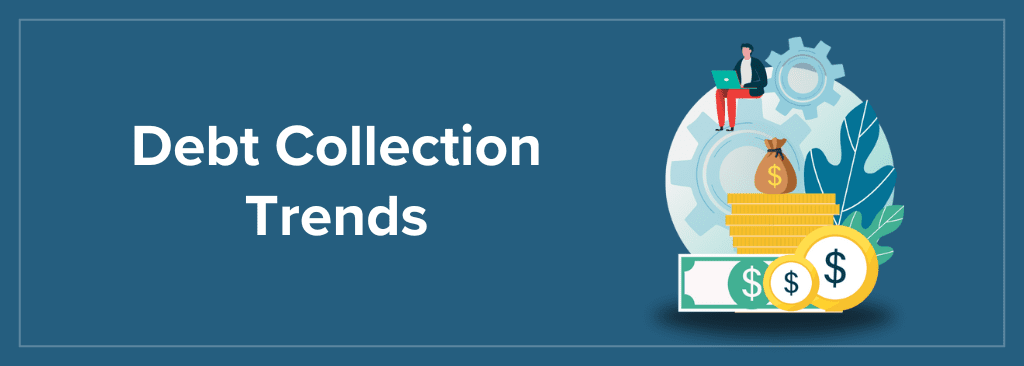How Is the Debt Collection Landscape Changing in India?
The Indian financial services ecosystem represented an enterprise value of $1.4 trillion in 2021. Of this, $100 billion was accounted for by the Indian fintechs – slightly less than 10%.
The Indian fintech sector is poised to capture nearly $350 billion in enterprise value by 2026. This will represent a 25% share of the financial services enterprise value.
There are more than 2,000 active fintech startups in India. They are broadly categorized into lending, payments, wealthtech, insurtech, and regtech. For the benefit of our understanding, let us look at lending and payments alone, which are also in the business of debt collections.
When we look at lending and payments alone, we talk about 250+ organizations.
NBFCs disbursed more than 60% of all loans through Digital Lending Applications. India’s debt collection software market is expected to touch over $272 million by 2027.
What Are Some Traditional Debt Collection Practices
The traditional debt collection practices included:
Phone Calls and Letters – debt collectors typically start by making phone calls and sending reminder letters to the debtor.
Field Visits – if the initial attempts fail, the debt collectors may visit the debtor’s residence or place of work and remind the debtor of their obligation to repay. Sometimes, these are not done politely.
Family and Social Pressure – debt collectors sometimes may involve the debtor’s family members or social network to pressure the debtor to repay the debt. This was considered controversial at best.
Legal Notices – debt collectors often send legal notices to the debtor if the other methods are ineffective. They warn of legal action if the debt is not repaid immediately, which may result in the attachment of property or garnishment of wages.
Mediation and Negotiation – a mediator or third party is engaged to facilitate discussions between the creditor and debtor to agree on a repayment plan for large-value debts.
Pledge of Collateral – for secured loans, where collaterals back the debt, the lender may take possession of the collateral if the debtor defaults on payments.
Credit Bureaus – lenders may report delinquent accounts to the credit bureau in India, which can negatively affect the debtor’s credit score and ability to attract future credit.
Debt Recovery Tribunals – lenders may approach these quasi-judicial bodies that facilitate the recovery of debts.
Various issues cropped up because of the methods used by debt collectors. Along with this, the legality and ethics of debt collection practices also evolved.
These legalities and ethics include Reserve Bank of India (RBI) guidelines, the Securitization and Reconstruction of Financial Assets and Enforcement of Security Interest (SARFAESI) Act, the Insolvency and Bankruptcy Code (IBC), Fair Debt Collection Practices Act (FDCPA), and Regulation – F.
The idea is to make debt collections less intrusive and actively use technology to make things easier.
Everyone Wants to Be on the Right Side of the Law
The basic premise of debt collections should be that no debtor is looking to default or defraud on their borrowings.
The new age fintechs have made debt collections less intrusive and have resorted to a technology approach, enhancing the overall customer experience and improving recovery rates.
What Has Been Our Experience With Debt Collections?
We have been working with multiple fintech lenders and payment solution providers where we help them with their collections software.
Based on our experience, we have understood this from the market.
Reminders and Credit Bureaus
Our cloud call center solutions platform helps lenders send reminders to the debtors about an upcoming payment at least a week in advance by email, text, and WhatsApp messages. This reminds them to fund their accounts sufficiently that would get debited. More than 90% of the debtors make their payments on time.
After this, when the debtor defaults, our platform helps them send another set of automated reminders with options for them to make the payment immediately. This allows them to collect about 40% of the payments from defaulters.
This is followed by another reminder where the lenders mention reporting it to the credit bureau and how it would affect their credit score and future credit availability. Besides, they would also provide them with the option to pay. This allows them to collect about another 40% of the payments from defaulters.
Phone Calls and Answerability Ratios
After all these reminders, you would still have about 10 to 20% of the defaulters not making the payments.
These are people who are called by the trained agents, asking them to make the payments. The biggest challenge here is for the lender to reach the defaulters successfully.
The phones often go unanswered, and the reachability takes a hit.
Our platform considerably increases the answerability ratio for lenders. For instance, for every thirty attempted calls, you connect to one debtor, and then you need to make 1500 calls to keep 50 of your agents busy talking to defaulters.
Our platform has no restrictions on the number of channels, and our predictive dialers ensure answerability for the lenders.
Besides, we keep changing the DID numbers, which prompts the defaulters to pick up the calls.
Data-Driven Decision Making
Our platform helps lenders assess and understand the patterns. For instance, if a debtor is delaying the payments consistently for over three months, we pull that data out and put them in a high-risk bucket.
This will allow the lender’s credit teams to speak to the customer, understand the fundamental issue of the delay, and may even restructure the loan payment to make it easy for the debtors.
Check our blog on : How Modern Software Can Fix Debt Recovery Rates
The new age fintechs have started effectively using technology to accelerate the overall debt collection process and make it more goal-focused. With this infrastructure, debt collections are also at a reduced risk and a point of improved cash flow.
By combining digital channels, creative payment options, data analytics, and automation, you can enhance the efficiency of debt collection processes and improve debtor experiences.
